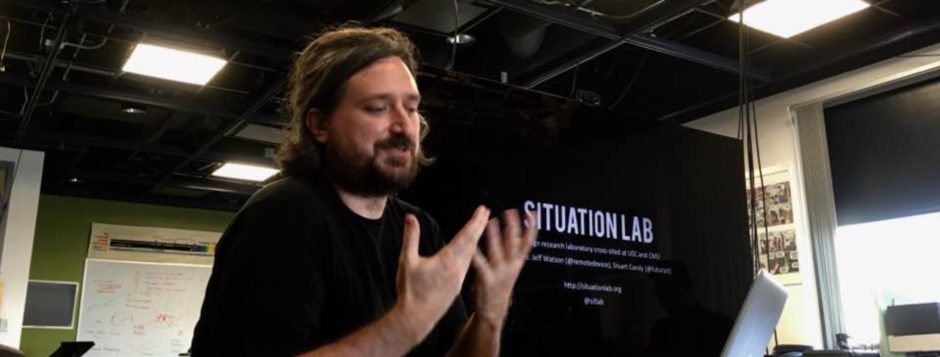Johanna Drucker’s discussion of code and materiality (“Code is not an immaterial ideal“) got me thinking about Theo Jansen’s Strandbeest project:
Jansen’s Strandbeests are the product of an iterative programming process that completely collapses the supposed boundary between materiality and code. The intricate interlocking wooden components of these lumbering giants constitute simple circuits, storage devices and if/then statements that govern the way the “animals” move and respond to their environment; like a traditional software designer, the Strandbeests’ “programmer” deploys certain arrangments of form, sees what works and what doesn’t (beta testing), then “re-codes” to make the animals more likely to survive and prosper. Jansen himself considers his Strandbeests a kind of ALife project wherein new forms are “evolved” and the “winning codes multiply.” Physical computing projects like this (and this is clearly one of the most radical of its kind, given that the Strandbeests use no electronics whatsoever) are provocative examples of Drucker’s contention that “form is constitutive of information, not its transparent presentation.” (139)
Leaving magical Strandbeest beach aside for the moment, I wonder how other non-electronic digital systems complicate or compliment some of the thinking we’ve been doing this week about code and protocol. In particular, I’m curious to see if moving around or beyond our contemporary notion of what constitutes computation might address some of the ambiguities Mei identified regarding commonly-held definitions of the digital and the virtual. Charles Babbage’s famous Difference Engine (a programmable mechanical computer from 1847), Leibniz’s Stepped Reckoner, clockwork astrolabes like the incredible Antikythera Mechanism or the lesser-known but perhaps coolest-of-all pocket-sized Curta Calculator each exhibit very different kinds of graphesis (or maybe we should coin a new word here: antikemenesis?) — where is the “code” when it cannot be separated from the mechanical processes that articulate it?
